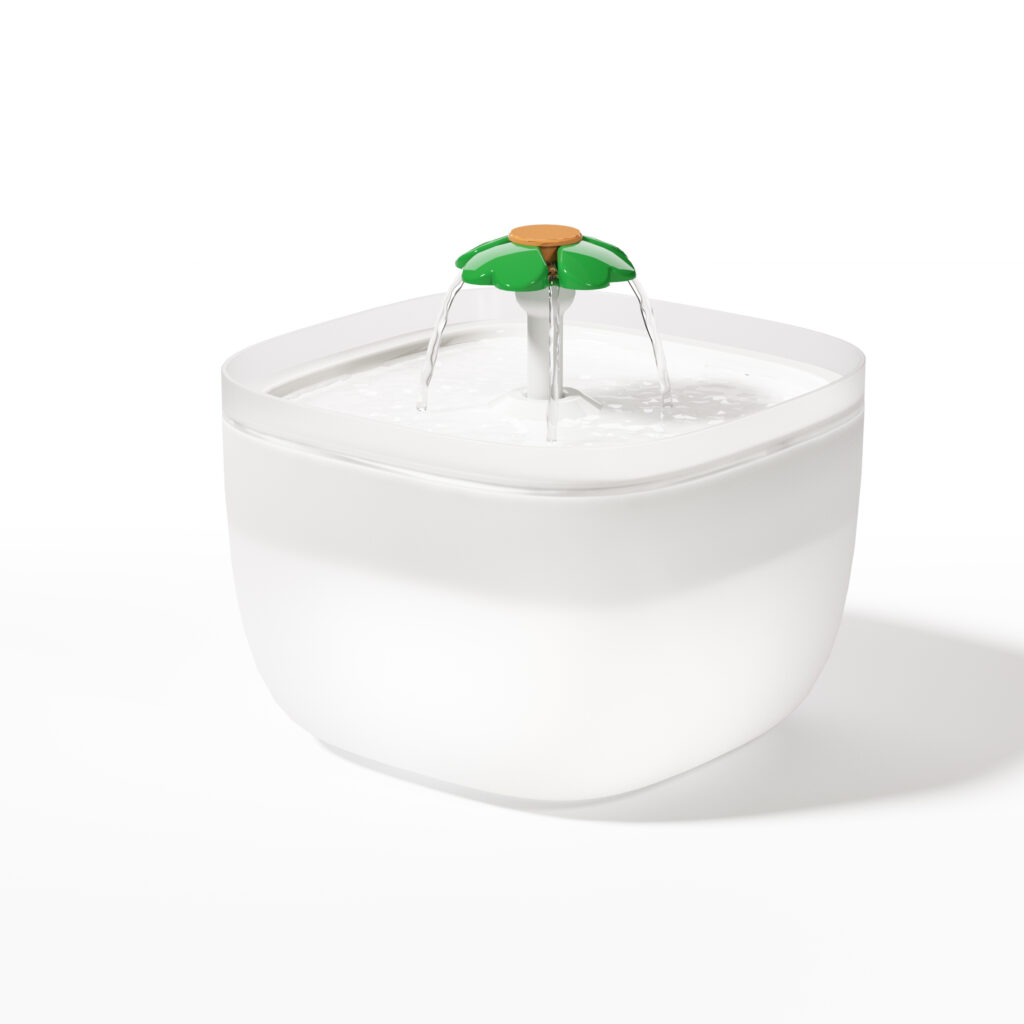Introduction
Hey there, pet parents! If you’re diving into the world of smart pet feeders and waterers, you’re in the right place. These nifty gadgets are game-changers for pet owners, ensuring that our fur babies are fed on schedule, whether we’re at home or away. But did you know that the power option you choose—battery-powered or non-battery—can significantly impact your user experience and even the logistics of getting these feeders to your doorstep?
Battery-powered feeders offer flexibility and peace of mind during power outages, while non-battery models boast stability and lower long-term costs. However, when it comes to exporting and importing these devices, especially those with batteries, the challenges ramp up. From understanding lithium battery shipping regulations to managing costs associated with consolidated cargo, getting smart feeders across borders is a whole different ball game.
In this blog, we’ll explore these key differences, market implications, and navigate the export hurdles, so you can make an informed choice for your pet while keeping logistics in check.
Core Differences Between Battery-Powered and Non-Battery Models
 Image courtesy: Unsplash
Image courtesy: Unsplash
Choosing between battery-powered and non-battery models of smart pet feeders involves understanding several core differences. Getting to know these distinctions helps pet owners make informed decisions that fit their specific needs and environments.
Power Supply & Functional Scenarios
Battery-Powered Models
Battery-powered models boast built-in rechargeable lithium batteries that can be refueled via USB or solar charging. This power source makes them perfectly suited for locations without a fixed power supply, such as outdoor settings or during emergency power outages. Additionally, they offer increased mobility, allowing users to easily move them around. Imagine the flexibility of setting your pet’s feeding station wherever you wish, without being bound by the location of your power outlets.
Non-Battery Models
On the other hand, non-battery models rely on a direct power supply, typically at 110V or 220V, or sometimes they utilize Power over Ethernet (PoE). They excel in indoor environments that require stable power for long-term continuous use. Although fixed in their locations due to the need for a power outlet, they are ideal for pet owners seeking a reliable feeding solution without the interruption of needing to recharge batteries.
User Needs & Advantages
Battery-Powered Essential Use Cases
Battery-powered smart pet feeders are particularly beneficial for homes with multiple levels, eliminating the need for complicated wiring across floors. They’re also indispensable in regions prone to frequent power outages, ensuring pets are never left unfed. Moreover, for households where pets spend a lot of time alone, these feeders provide a comforting backup power option, delivering consistent care even in the owner’s absence.
Non-Battery Advantages
Conversely, non-battery models typically have lower long-term costs as they require no battery replacements. They boast a more stable feeding accuracy since they’re less affected by power fluctuations, making them attractive to those who prioritize precision and repeatability in their pet feeding schedules.
Significance and Importance of Battery Options
The option between battery power and direct power touches more than just convenience; it concerns reliability, safety, and maintenance.
Reliability and Flexibility
In terms of reliability, battery-powered options shine during unforeseen power outages. The assurance that the pet feeder will continue its job uninterrupted can be a major source of peace of mind for pet owners. Furthermore, the freedom in device placement allows users to set up the feeder in the most convenient spot without worrying about power access. This flexibility enhances user satisfaction, especially in dynamic homes where space utilization may change.
Safety Benefits
Safety is a paramount consideration for any pet product. Battery-powered models offer significant safety advantages by eliminating exposed power cords, thereby reducing tripping hazards and the risk of pets chewing on cables. This makes them an excellent choice for households with curious pets and active children.
Maintenance Considerations
Maintenance-wise, battery-powered feeders require attention to battery life and charging frequency. It’s essential for owners to regularly check battery status to ensure the feeder is primed for use. Backup reliability is also a crucial factor, as it determines the effectiveness of the feeder during unexpected power losses. While this may add a layer of care, the additional effort is often justified by the autonomy such feeders provide.
In conclusion, whether a battery-powered or non-battery model suits you best depends on your specific scenarios and preferences. Battery-powered feeders offer unparalleled flexibility and reliability in varied environments. Conversely, non-battery models deliver consistent performance and cost savings for users prioritizing long-term dependability. As the market expands, understanding these differences is critical for making the best choice for you and your pet’s needs.
Export and Import Key Considerations
 Image courtesy: Unsplash
Image courtesy: Unsplash
As the pet technology market continues to innovate, exporting and importing smart pet feeders—whether battery-powered or not—comes with its own set of challenges and considerations. Not only do manufacturers need to focus on the functionality and user needs of their products, but they must also carefully navigate the shipping and regulatory landscapes, which can make or break their entry into international markets.
Battery Shipping Challenges in Consolidated Shipments
One of the most significant challenges when exporting battery-powered smart pet feeders is adhering to international shipping regulations for lithium batteries. This is especially tricky when these products are shipped as part of a consolidated cargo.
– International Maritime Restrictions: Products containing lithium batteries must be declared under the International Maritime Dangerous Goods (IMDG) code as UN3480 or UN3481. This ensures they meet stringent safety guidelines. Mixing these items with non-battery cargo can pose risks, such as having an entire shipment rejected if not in compliance.
– Cost Implications: Shipping battery-powered models separately might save you from potential headaches but can be up to 50% more expensive than regular shipments. This cost increase is due to the need for detailed documentation, such as Material Safety Data Sheets (MSDS) and UN38.3 test reports, ensuring each battery meets safety standards.
– High-Risk Customs Regions: Different regions have varying requirements. For example, the European Union mandates CE and RoHS certifications, and batteries must satisfy the EN 62133 standards. Meanwhile, in the United States, feeders could be classified under FDA regulations due to their ‘electronic and food contact material’ nature, thereby requiring dual certifications for market entry.
Certification and Labeling Requirements
Proper certification and clear labeling are crucial in ensuring products meet both regulations and consumer expectations across borders.
– Battery-Powered Models: These smart feeders must prominently display battery capacity (e.g., “Li-ion 2000mAh”) and carry fire safety certifications such as UN38.3. Additionally, recycling symbols and disposal instructions help guide consumers in environmentally responsible battery handling.
– Non-Battery Models: These require careful attention to voltage compatibility. For instance, products intended for the US must support 110V, while those for the EU must support 220V. Furthermore, components like water reservoirs must be certified as food-grade by agencies such as the FDA in the US or the EFSA in Europe, ensuring they are safe for pet interaction.
Regulatory Compliance Overview
Navigating the regulatory landscape is critical to the success of exporting smart pet feeders. Ensuring compliance with international standards can prevent costly rejections and delays at customs.
– Important Certifications: RoHS, CE, FCC, and other electronics and battery certifications are essential. They affirm that the products meet health, safety, and environmental protection standards. This not only facilitates smoother customs clearance but also provides reassurance to consumers regarding the safety and reliability of the products they purchase.
– Proper Labeling: Compliance extends beyond obtaining certifications; products must be clearly and accurately labeled as per the destination country’s requirements. This attention to detail reduces the likelihood of shipment refusal or delays and enhances consumer safety and satisfaction.
Successfully exporting smart pet feeders, particularly those with batteries, requires a nuanced understanding of international shipping regulations and product compliance standards. Manufacturers and exporters need to ensure their products are not only innovative and functional but also meet the diverse legal requirements of their target markets. By staying informed and vigilant, they can take advantage of the growing smart pet tech market while sidestepping the potential pitfalls in the global logistics arena.
Shipping and Logistics Best Practices
Shipping smart pet feeders, especially those equipped with lithium batteries, involves navigating a maze of regulations and ensuring smooth delivery across borders. Given the rise of battery-powered models, logistics have become increasingly complex. Let’s break down some best practices to ensure compliance and avoid shipping pitfalls.
1. Adherence to Battery Shipping Regulations: Battery-powered pet feeders require special attention when it comes to shipping. Regulations such as the International Maritime Dangerous Goods (IMDG) Code mandate that lithium battery products are correctly declared under UN codes UN3480 or UN3481. It’s crucial to package these products in compliance with safety standards, provide necessary documentation like Material Safety Data Sheets (MSDS), and include UN38.3 test reports. These steps aren’t just paperwork; they’re protective measures to prevent accidents during transit.
2. Risk Management for Customs Clearance: Customs clearance can be a significant hurdle, with risks of delays, inspections, or even shipment rejections. This is particularly tricky for 拼柜 (consolidated) shipments mixing battery and non-battery products. Therefore, it is essential to have in place robust systems for clear communication and unified compliance amongst all stakeholders to streamline the clearance process.
3. Selecting Experienced Freight Forwarders: Partner with freight forwarders experienced in handling battery logistics. These professionals understand the intricacies of international battery shipping regulations and can help mitigate risks associated with transporting battery-powered feeders. They can also assist in navigating complex customs requirements and maintaining compliance.
4. Unified Communication and Compliance: When dealing with consolidated shipments, it’s vital to maintain open lines of communication among all parties involved in the shipping process. This includes shippers, freight forwarders, and importers who must work in harmony to ensure that all regulatory requirements are met, documentation is complete, and shipments are correctly labeled.
By implementing these shipping and logistics best practices, the journey of a smart pet feeder from manufacturer to consumer becomes safe and efficient. Always remember, the top priority is compliance and ensuring that pets get their technology in pristine condition.
Additional Keywords and User Concerns to Address
 Image courtesy: Unsplash
Image courtesy: Unsplash
While distinguishing between battery-powered and non-battery pet feeders, there’s a lot more ground to cover when it comes to user concerns and expectations. Let’s explore some key areas that often pop up in consumers’ minds.
1. Reliability & Power Backup: Users want to ensure their furry friends are fed on time, every time. Battery life and maintenance are pivotal—long-lasting batteries with backup options are critical for reliability, especially during power outages.
2. Connectivity & Smart Features: Modern consumers are tech-savvy and look for devices that integrate seamlessly with their digital lives. Options like Wi-Fi or Bluetooth connectivity, app integration, and real-time notifications can elevate the smart feeder experience.
3. Portion Control & Scheduling: Precision is non-negotiable. Features offering customizable feeding times and portion control cater to pets’ dietary needs and help owners stick to precise feeding routines.
4. Safety & Hygiene: Safety always tops the list of concerns. BPA-free materials, easy-to-clean components, and tamper-proof designs make a product appealing to discerning pet owners. Hygienic installations ensure that feeders remain clean and safe amidst daily use.
5. Mechanical Reliability: No jams, no worries! Users value anti-jam mechanisms and error alerts that signify feeder reliability and minimal intervention from pet parents.
6. Security & Privacy: With smart devices comes the responsibility of safeguarding user data. Ensuring data protection, secure firmware updates, and continuous security enhancements can build trust with customers who are wary of privacy issues.
7. Environmental Adaptability: Whether the feeder is to be used indoors or outdoors, its ability to operate across varying temperature ranges—and even during unstable power conditions—is essential.
8. Customer Support & Warranty: Comprehensive customer support and warranty plans provide peace of mind. Quality after-sales service, effective troubleshooting, and competent assistance can turn a regular buyer into a loyal advocate.
Addressing these additional concerns and ensuring that your smart pet feeders meet these standards can significantly enhance consumer satisfaction. Ultimately, these devices are not only about convenience but also about fostering safe, happy environments for pets and their owners. By thoroughly understanding and addressing these concerns, manufacturers and retailers can capture the heart of the pet technology market.
Conclusion
In summary, choosing between battery-powered and non-battery smart pet feeders boils down to your specific needs and usage scenarios. Battery-powered models offer flexibility and convenience, especially in homes with multiple floors or areas prone to power outages. They eliminate tangled cords and provide a seamless feeding experience when the power is unpredictable. On the other hand, non-battery models are ideal for stable environments and offer long-term cost savings and better feeding accuracy.
Navigating the world of exports and imports with these devices can be intricate, particularly for battery-powered units. Shipping lithium batteries within consolidated cargo presents unique challenges due to strict international regulations, which can significantly impact costs and logistics. Understanding and adhering to certifications, labels, and safety measures is paramount to clearing customs smoothly and ensuring the devices reach customers safely.
Manufacturers and exporters should prioritize compliance and collaborate with seasoned logistics partners to avoid costly delays or rejections. This diligence will not only facilitate a smoother shipping process but also maintain customer satisfaction by delivering reliable, safe, and effective pet care solutions.
Contact us for more details about any questions (technical, price, shipment…)of pet smart dispensers (info@astuteinno.com)








